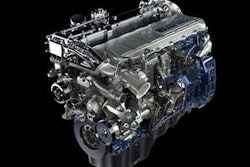Quality Distribution, Inc., is a very large and diverse transportation company but its strategy for information technology can be applied to any business. Some might call this strategy cloud computing, but whatever it is, it looks like the future.
QDI is comprised of three transportation companies: Quality Carriers, Boasso America and QC Energy Resources. The largest, Quality Carriers, is a bulk chemical transporter. Boasso America is a container intermodal service provider and QC Energy Resources, the fastest growing, specializes in the shale oil and gas industry.
Most of QDI’s 3,000 drivers are independent contractors. Of its 150 locations throughout North America, 80 percent have between three and five computer users; the other 20 percent have more than five. The company also provides IT services to a large affiliate network of franchise owners, says Cliff Dixon, vice president of IT for the Tampa, Fla.-based carrier.
Before 2011, QDI was already moving towards a cloud-based computing model. Its software was managed from a single data center that served up applications to users on demand. Instead of software being installed and supported on local desktops, users were accessing software remotely via a Microsoft product called Terminal Server.
In early 2011, Dixon made decisions that changed the future of QDI’s information systems. By then it was obvious that computing hardware had become a commodity. He also saw a shift among users wanting more mobility and compatibility of QDI’s software with personal devices such as the iPhone, iPad and Android.
In early 2011, Dixon decided to convert QDI’s e-mail from Microsoft Exchange to Google Apps. After converting e-mail, he wanted to convert from Microsoft Office to Google Docs. As part of this change, he also began looking for an operating system that did not require QDI to purchase Microsoft licenses.
QDI began working with Google after the company announced its new Chrome operating system. The company purchased 250 Chromebox computers at the end of 2011. Having a Chromebox for a desktop provides all of the familiar advantages of a PC such as the ability to use dual monitors. The drawback, however, was that users still needed to use Microsoft Office and other applications which were not Web-based.
The company found a solution from a company called Ericom. With its AccessNow product, QDI has the same functionality of Microsoft’s Terminal Services, only now users are accessing software through a Web browser. With AccessNow, users can continue working on the legacy Windows applications they’ve grown used to while also working with Google Docs, whether they’re connecting from a Chromebox, iPad, Blackberry or other device.
As part of the transition, QDI is converting its software to web-based applications and will be cutting down on the terminal-server apps over time.
“We’ve seen a big shift in users converting documents into Google, and pressuring others to do it,” he says. “We are creating a network where you can bring any device in that you want to work from if you feel it makes you more efficient.”
The strategy extends beyond the office environment. All drivers, for instance, currently have Blackberry devices but the company is in the process of changing to an environment that doesn’t restrict their technology choices. Drivers will become the consumers of technology.
“We want to be a provider of value to them. Drivers are in demand and we want to be an attractive alternative. It is easy to come onboard and easy to get to the data you need to do your job.”











